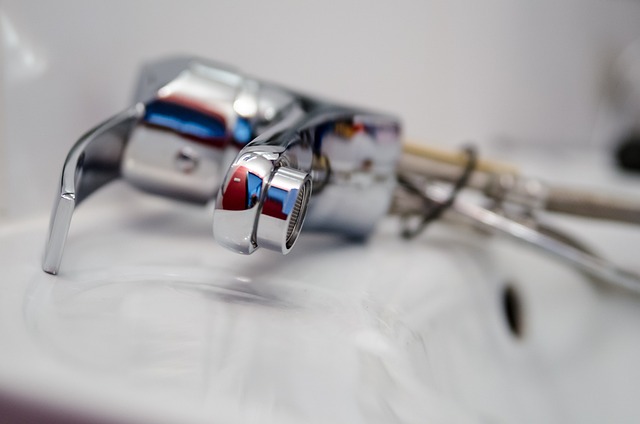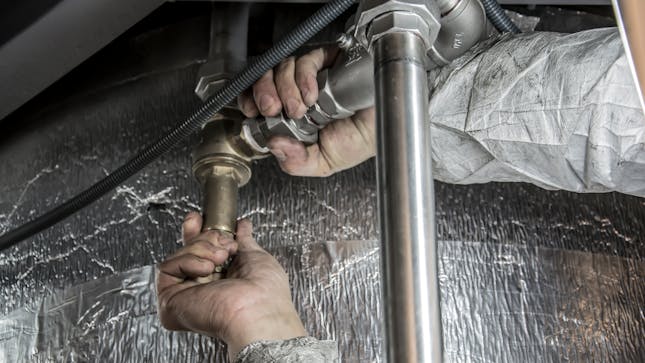Want to avoid costly plumbing disasters? You’re not alone. Current data shows a worrying scenario of plumbing problems across America. Data from Nature Cities reveals that more than 1.1 million urban residents currently face a lack of running water which has become a greater issue since the economic downturn of 2008. The Hippo survey shows that 66% of US homeowners have dealt with summer plumbing problems and 27% experienced property damage.
The good news? With adequate maintenance and early detection homeowners can prevent the majority of plumbing problems. We’ll explore protective measures for your home plumbing system to keep you out of these troubling statistics.
What You’ll Discover Inside:
- Understanding Your Home’s Plumbing System
- Essential Preventive Maintenance Steps
- Signs of Impending Plumbing Problems
- Professional vs DIY Solutions
- Seasonal Plumbing Care Tips
- Emergency Response Guidelines
- Cost-Effective Maintenance Practices
- Common Mistakes to Avoid
- Future-Proofing Your System
Understanding Your Home’s Plumbing System
Your home plumbing functions as its circulatory system because it is complex and essential while needing constant maintenance. When working with a reliable plumbing service provider like the top plumber in Knoxville, TN, professionals stress that homeowners should start by learning about their plumbing system to prevent future problems.
The standard plumbing system in a residential setting operates through two distinct subsystems.
- Fresh water enters the home system for drinking purposes and to support washing and cleaning activities.
- Wastewater going out through separate pipes
Two plumbing subsystems connect and operate through a network of pipes while also using valves and various fixtures and appliances. Every part of a plumbing system ensures proper water flow and pressure within your home functions effectively.
Essential Preventive Maintenance Steps
Preventive measures in plumbing systems remain the most effective and economical way to avoid future repairs. Recent surveys show that 61% of homeowners actively work to prevent expensive plumbing repairs especially during summer months.
Regular Inspection Routine
Start by implementing a monthly inspection schedule:
- Inspect all exposed pipes to find leaks or signs of corrosion.
- Measure the water pressure at various locations throughout your residence
- Examine faucet aerators and showerheads to identify mineral deposits
- Examine toilet components for proper operation
- Check for indications of water damage in the areas surrounding your home fixtures and appliances.
Drain Maintenance
Keep your drains flowing freely by:
- Install drain strainers in every sink and tub throughout your home.
- Regularly cleaning drain stoppers
- Flushing drains monthly with hot water
- Prevent pipe damage by not using strong chemical cleaners.
- Do not pour grease or oil into your drains to maintain clean plumbing systems.
Water Pressure Management
Maintaining proper water pressure is crucial. Pipes and plumbing fixtures face stress from high pressure whereas low pressure levels can signal hidden issues. The ideal range is between 45-55 PSI. Install a pressure regulator when your home water system operates above 60 PSI.
Signs of Impending Plumbing Problems
Recognizing early warning signs helps prevent expensive repair needs. Watch for:
- Unusual sounds (gurgling, whistling, or banging)
- Slow-draining sinks or tubs
- Fluctuating water pressure
- Unexplained increase in water bills
- Damp spots on walls or ceilings
- Foul odors from drains
- Your water meter continues to count usage even though you are not utilizing any water.
Professional vs DIY Solutions
Homeowners can take care of minor plumbing problems but having the knowledge to know when to hire a professional remains essential. Considering that 60% of homeowners spend at least $200 on their most recent plumbing repair work it becomes essential to know which tasks you can manage without professional help.
Safe DIY Tasks:
- Unclogging simple drain blockages
- Replacing faucet washers
- Cleaning aerators and showerheads
- Adjusting toilet components
- Tightening loose connections
- Main line issues
- Hot water heater repairs
- Pipe replacements
- Sewer line problems
- Complex fixture installations
Seasonal Plumbing Care Tips
Your plumbing needs change with the seasons. Here’s how to prepare:
Spring
- Inspect for winter damage
- Clean gutters and downspouts
- Check outdoor faucets and hoses
- Inspect your property for indications that the ground movement is damaging underground pipes
Summer
A survey indicated that 66% of homeowners deal with plumbing problems during the summer months. Stay ahead with these steps:
- Monitor irrigation systems
- Check for leaks in outdoor fixtures
- Inspect pool plumbing if applicable
- Clear AC condensate lines
Fall
- Insulate exposed pipes
- Drain and store outdoor hoses
- Clean gutters before winter
- Schedule professional maintenance
Winter
- Keep heat on during cold snaps
- Open cabinet doors to warm pipes
- Let faucets drip during freezes
- Know your main water shutoff location
Emergency Response Guidelines
No matter how much preparation goes into it plumbing emergencies may still happen. Be prepared by:
1) Creating an emergency kit containing:
- Pipe wrench
- Plumber’s tape
- Basic tools
- Bucket and towels
- Battery-powered light
2) Knowing critical locations:
- Main water shutoff valve
- Individual fixture shutoffs
- Water meter
- Clean-out access points
3) Having emergency contacts ready:
- Licensed plumber
- Water company
- Insurance provider
- Restoration service
Cost-Effective Maintenance Practices
While some homeowners might hesitate to invest in preventive maintenance, consider this: Emergency plumbing repairs exceed $200 on average while major problems can reach into the thousands. Here are some budget-friendly maintenance practices:
Daily Habits
- Run water in rarely-used fixtures
- Avoid using toilet as a waste basket
- Clean shower and sink drains after use
- Address minor leaks immediately
- Use strainers in all drains
Monthly Tasks
- Flush hot water through drains
- Check faucet aerators and clean if needed
- Run water in spare bathrooms
- Inspect visible pipes for condensation
- Test all shutoff valves
Annual Investments
- Professional plumbing inspection
- Water heater maintenance
- Sewer line camera inspection
- Pressure regulator check
- Water quality testing
Common Mistakes to Avoid
Many plumbing issues stem from simple oversights. Here are key mistakes to avoid:
- Over-tightening connections
- Using drain chemicals as first resort
- Ignoring small leaks
- Attempting complex repairs without proper knowledge
- Failing to locate shutoff valves before emergencies
- Planting trees too close to sewer lines
- Connecting multiple appliances to weak pipes
Future-Proofing Your Plumbing System
The advancement of home plumbing involves multiple innovations that merit consideration.
Sustainable Solutions
- Water-efficient fixtures and appliances
- Greywater recycling systems
- Rainwater harvesting setups
- Solar water heating
- Smart water management systems
Long-Term Investments
- Copper or PEX repiping for aging systems
- Tankless water heater upgrades
- Backup sump pump installations
- Modern pipe lining technologies
- Water filtration systems
Taking Action: Your Plumbing Protection Plan
Although plumbing maintenance isn’t the most thrilling aspect of owning a home it remains essential for property management. Preventive maintenance remains essential because 66% of homeowners face plumbing problems while the repair costs average above $200.
By implementing the strategies we’ve covered:
- Regular inspections and maintenance
- Proper usage habits
- Seasonal preparations
- Smart technology adoption
- Professional partnerships
Protecting your plumbing system extends beyond your pipes to safeguard your home and financial security while maintaining your mental peace. Investing one dollar in preventive measures can lead to ten dollars in savings by avoiding future repair expenses.
Start with small steps: Begin with regular monthly inspections, maintain a calendar for maintenance tasks, and establish a connection with a reliable plumbing expert. The maintenance you put into your plumbing now will earn gratitude from your future self.





